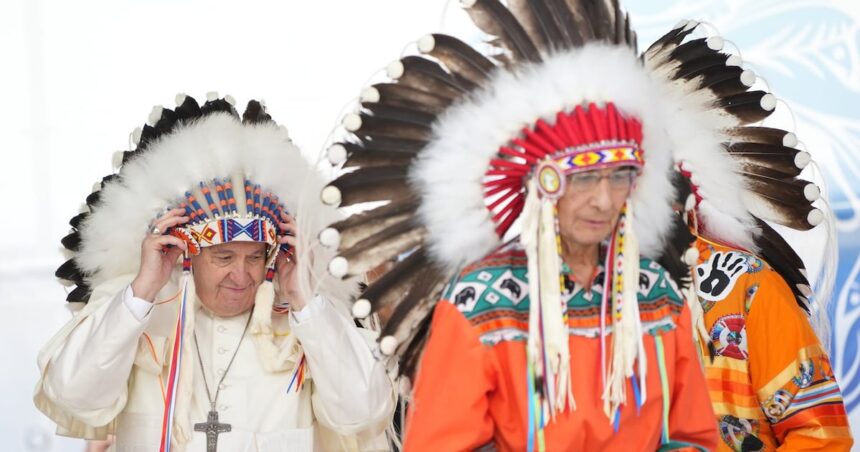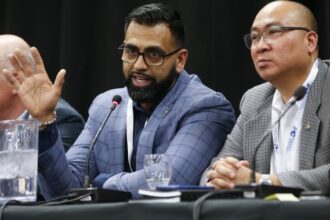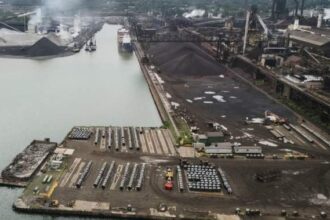In the wake of Pope Francis’s historic 2022 apology on Canadian soil, Indigenous leaders across the country are expressing cautious optimism that his successor, Pope Leo XIV, will carry forward the Catholic Church’s commitment to reconciliation with Indigenous peoples. The papal transition comes at a critical moment in Canada’s ongoing efforts to address the painful legacy of residential schools and rebuild relationships between the Church and Indigenous communities.
“The apology was just the beginning,” says Wilton Littlechild, former Grand Chief and Truth and Reconciliation Commissioner who greeted Pope Francis during his Canadian visit. “We hope Pope Leo will take concrete steps to implement the calls to action that directly involve the Catholic Church, particularly related to residential school records and artifacts.”
Indigenous leaders have emphasized the need for the Vatican to release all documents related to residential schools, which housed approximately 150,000 First Nations, Inuit, and Métis children between the 1870s and 1996. The Catholic Church operated about 60 percent of these institutions, where thousands of children suffered physical, sexual, and psychological abuse while being forcibly separated from their families and cultures.
During meetings with Vatican officials last month, Assembly of First Nations National Chief Cindy Woodhouse Nepinak stressed that maintaining momentum on reconciliation must be a priority for the new pontiff. “Pope Francis’s visit was significant, but real healing requires ongoing action,” Woodhouse Nepinak stated. “We’re looking for more than words from Pope Leo—we need commitment to truth, justice, and genuine partnership.”
The relationship between Indigenous peoples and the Catholic Church remains complex. A recent survey conducted by Indigenous researchers found that while 72% of respondents viewed Pope Francis’s apology as meaningful, 84% believe the Church must do more to address the harms caused by residential schools.
Natan Obed, president of Inuit Tapiriit Kanatami, points to the Church’s continued possession of Indigenous cultural items as a particular concern. “Many sacred objects remain in Vatican museums or Church archives,” Obed noted. “Returning these artifacts would be a tangible demonstration of Pope Leo’s commitment to making things right.”
Canadian political leaders have also weighed in on the papal transition. Prime Minister Justin Trudeau issued a statement welcoming Pope Leo and expressing hope that he would “continue the vital work of reconciliation with Indigenous peoples in Canada.”
Vatican observers suggest the new pope may bring a different approach to Indigenous issues, given his theological background and previous work in Latin America, where he engaged with Indigenous communities facing similar historical traumas. Cardinal Michael Czerny, a Canadian-Czech who serves as Prefect of the Dicastery for Promoting Integral Human Development, indicated that Pope Leo has expressed interest in learning more about Canada’s reconciliation process.
The Catholic Church in Canada has taken some steps toward reconciliation since Pope Francis’s visit, including funding healing programs in Indigenous communities and initiating educational programs about residential school history within Catholic schools. However, critics argue these measures fall short of the comprehensive response outlined in the Truth and Reconciliation Commission’s Calls to Action.
“True reconciliation isn’t a one-time event or a single apology,” explains Mary Ellen Turpel-Lafond, former director of the Residential School History and Dialogue Centre. “It’s a sustained commitment to truth, justice, and changed relationships. The question now is whether Pope Leo will demonstrate that level of commitment or allow this critical work to stall.”
As Indigenous communities await signals from the new pontiff, many wonder: Will Pope Leo XIV seize this pivotal moment to transform words of apology into concrete actions that honor the dignity, cultures, and rights of Indigenous peoples in Canada?










